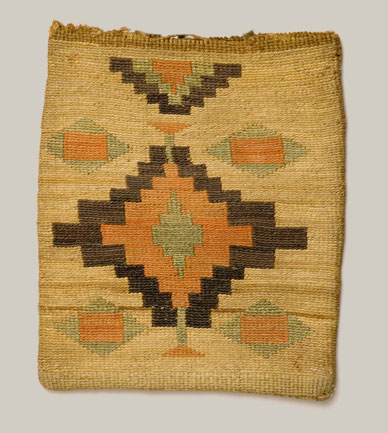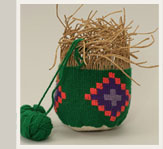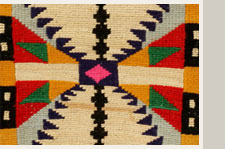|
|
 |
Weavers left identifying markers in their bag - a flaw that would stand out in their work, because Haniyawáxt (the Creator) was the only one that created perfection.
Ida Blackeagle, Nimiipuu weaver |
There is a long tradition of woven baskets among the peoples of the Columbia Plateau. In 1805, Lewis and Clark received berries and roots in woven baskets. Widely used in most households, baskets were used for gathering, storage, and for transportation. They were made in winter, after spring and summer food-gathering and processing activities were over.
Reservation life limited access to wetlands where raw materials had always been gathered. Commercial fibers such as cornhusk, wool and cotton twine replaced gathered materials. These were available at first through trade, and then in general stores. Weavers made flat twined cornhusk bags and round 'sally' bags from cornhusk, wool, and cotton twine. They also made coiled baskets decorated by imbrication
Artists created woven masterpieces featuring complex geometric designs, as well as animals and figures. Cornhusk bags carried different designs on each side. Some designs came as an inspiration to the maker; others were an expression of something they had seen in nature. Makers also created designs to fit the interest or character of the person for whom the basket was being made.
|
|
|
|
























